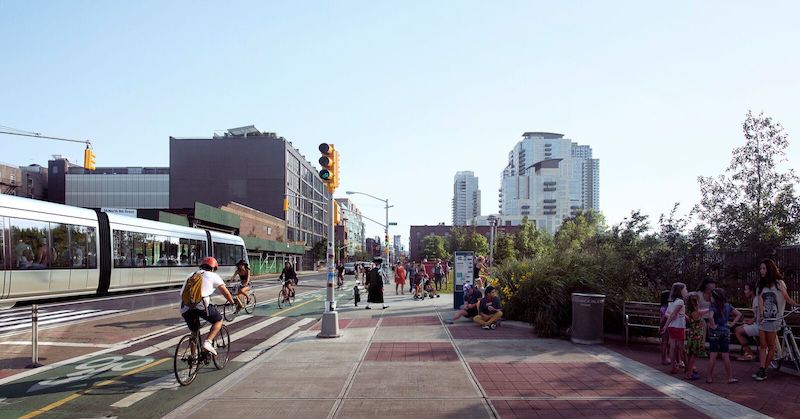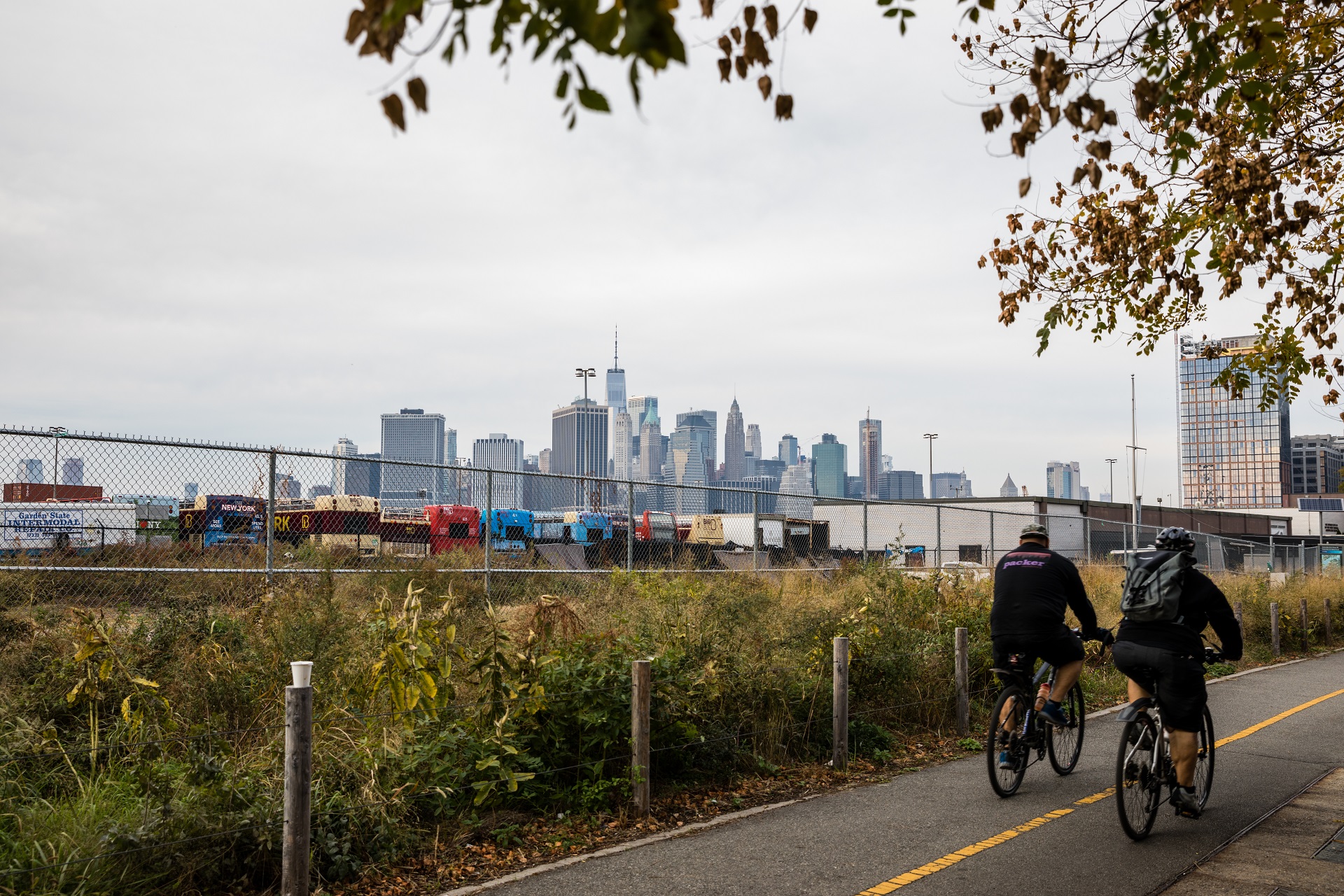Exclusive: Critics, advocates of BQX go head-to-head in heated panel
Memo casts doubt on project's ability to pay for itself

At a recent conference at Brooklyn Borough Hall, proponents and opponents of Mayor Bill de Blasio’s BQX streetcar went head-to-head in an impassioned debate regarding the viability of the project. Shown: The trolley runs through Williamsburg. Rendering courtesy of Friends of BQX
To build a trolley or not.
That was one of the topics of discussion at a recent conference dubbed “Moving Goods and People to, From and Along the Brooklyn Waterfront.”
The gathering, which took place at Brooklyn Borough Hall, was hosted by CUNY’s Brooklyn Waterfront Research Center and its Urban Transportation Research Center.
